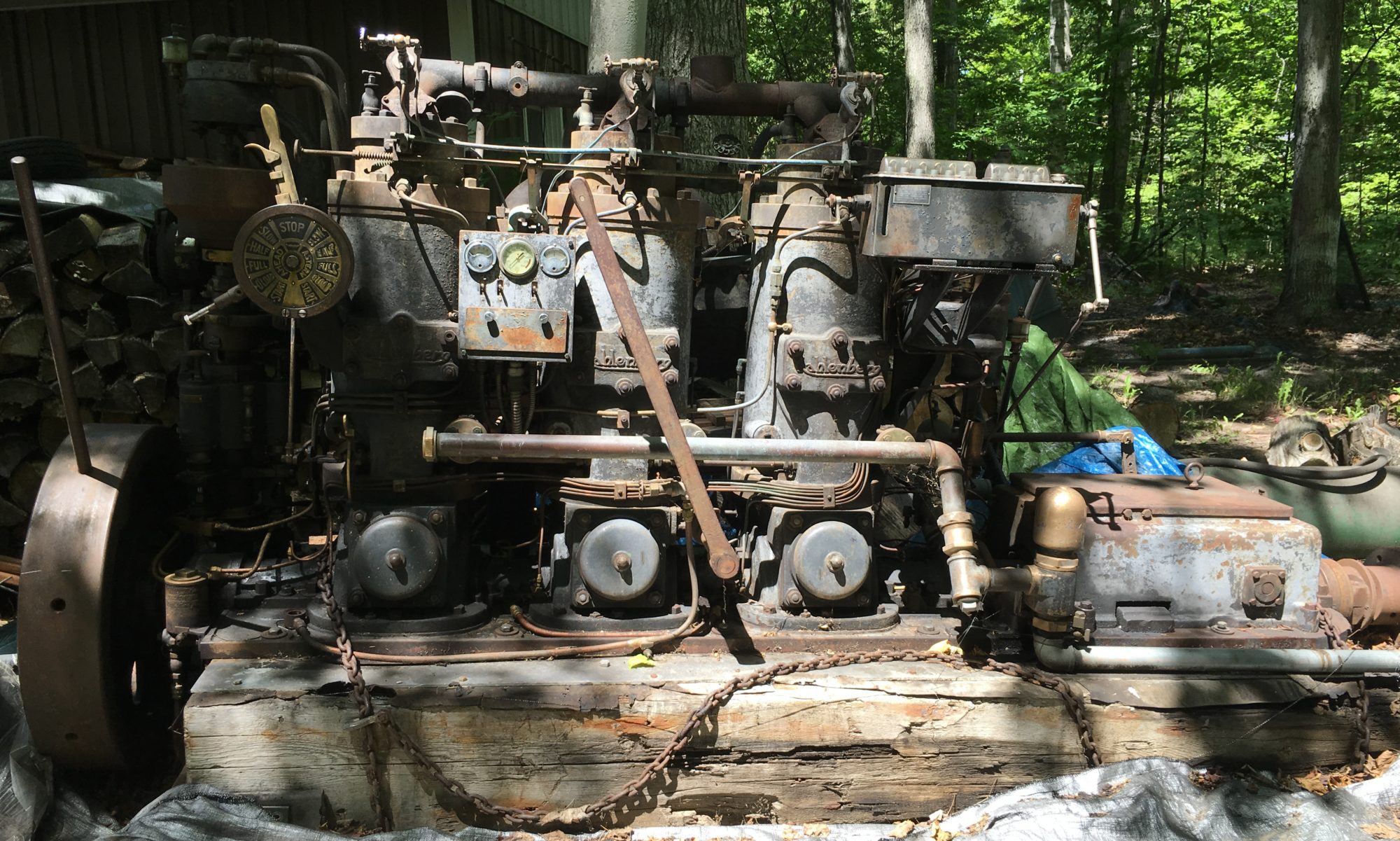We had a visitor in the shop last week. Kurt Krueger restored a Kahlenberg a few years ago and donated it to the Door County Maritime Museum in Gills Rock. I’ve been communicating with him for five years but we had not met in-person. Kurt decided to make the trip from eastern Wisconsin and stayed with us for a couple days. Even though I couldn’t completely escape from work commitments, he worked in the shop doing a number of very helpful things. Kurt is a wealth of information and very generous with his time. Below is a picture of Kurt (in the back) with his engine:

One huge difference between Kurt’s restoration and mine is that his engine started as a rusted hulk in awful condition after having sat outside for decades. My engine was kept in fairly good condition with minimal damage from the elements. He had many parts that had to be fabricated from scratch because the originals had basically disintegrated. Just getting his pistons out of the cylinders was a challenge.
Kurt assisted me with repairing one of the fuel injector pumps, the cracked manifold and made a big number of gaskets that I will need soon.


I’ve been deliberating on what to do with the crack in the exhaust manifold. Welding seems to be out of the question, or at least not without a lot of risk. Tapered iron plugs was another option but I was having trouble getting comfortable with that repair method. Since the water isn’t at a very high pressure level, I considered doing nothing at all and just letting it leak. But that might lead to longer term issues. It might be considered a hack by some (including me) but we decided to grove out the crack and fill with epoxy. I’m hoping this repair lasts but I could always go back to the tapered iron plugs. It passed the pressure test.

I’ve had the disassembled fuel injector pumps on my bench for a few months. There is one pump for each cylinder. An injector pump is a block of brass that has a plunger piston operated from the governor tower. There are two valves in the block, input and outlet fuel. One of the valves was stuck in the seat deep in the block. I had it soaking for a couple months but it refused to come out. There is very little to grab on the valve. Oddly, all the valves had a slot cut in the top to allow lapping to be done with a screwdriver but the one that was stuck did not have such a grove. We decided that the only option was to drill a hole in the bottom of the block directly underneath the valve so we would punch it out. This worked well but that valve was stuck in the seat pretty good. There had obviously been water in there and some rust had frozen it in place. We cut a new groove in the valve, cleaned it up and lapped it back in place. We then tapped the drilled hole and sealed it with a brass screw. All three pumps feel like they are working but of course will need to be tested.
The last task in my way before the main bearing work is the number one bearing cap. The repairs done by the shop a couple years ago are turning out to be more harm than good. The caps are held in place with 4 bolts and 2 taper pins. I did not discover until recently that the shop drilled out the tapered holes so I’ve lost the ability to accurately locate the bearing cap. Fortunately they did not drill out the block but just the cap. I’m considering bolting in place and reaming oversized holes into the block. There are some challenges with this that I won’t go into right now but short of finding another bearing cap, I’m out of ideas. I will see if my bearing guy has any other ideas.


